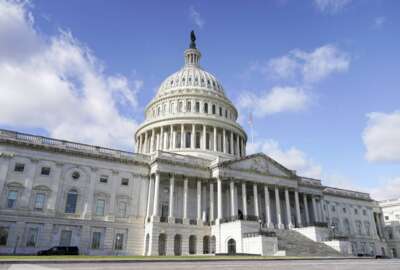Regulators and highly religious people have something in common. Namely, the idea of fences. If something is wrong or to be avoided, you don’t just build a prohibition against that thing. You also prohibit and make rules for activities or phenomena that could lead to the forbidden thing.
Then you prohibit and make rules for activities or phenomena that could lead to the thing, that could lead to the prohibited thing. The outer rules or prohibitions — sometimes many concentric rings deep — are called fences. It’s like having insurance to insure insurance.
Example: In some religious systems, it’s forbidden for unmarried members of the opposite sex to touch one another, even a handshake or cheek-to-cheek air kiss. So instead of a simple ban, thou shalt not touch, some groups have an elaborate set of physical and visual separation rules to prevent any possibility of even the temptation to touch a member of the opposite sex. In some cases, you end up with separate swimming pools for men and women, or separate hours for use of a single pool with screens all-round so people don’t even see one another, let alone be tempted to touch, let alone actually touch. It may not be your system or mine, but it works for them.
This came to mind in looking over the agreement between Boeing’s commercial airplane division and its principal regulator, the FAA. Boeing the other day agreed to pay a $12 million fine to settle a series of alleged lapses in compliance, some of which had been going on for years. According to the FAA summary, Boeing could be on the hook for another $24 million if it violates the agreement within the next five years.
When reading some of the headlines, my first thought was, gosh, I’m flying to Buffalo and back for a 24-hour trip. Will my plane fall apart? Bur reading deep into the summary, I noticed this sentence: “The FAA did not allege that these issues created unsafe conditions.”
No, Boeing’s allegedly violated elaborate rules for reporting deadlines, internal audit procedures, and processes for creating product specifications.
Fences.
For example, Boeing was chided for tardiness in correcting and reporting on a supplier that providing incorrectly shaped fasteners. Whether these were fasteners for holding engines onto wings or for the curtain between first class and economy we don’t know. Most likely they were never actually used on a plane in the first place. In another case, Boeing was slow to produce information about the installation of flammability reduction equipment on two airplane models.
In still another case, the FAA is requiring Boeing to boost the training of manufacturing and quality control employees who deal with metal stampings and how they comply with, well, compliance regulations for reporting stampings that don’t come out right.
In short, the problems didn’t mean Boeing was cutting corners on the quality of the planes it delivers, using ill-fitting stampings or the wrong rivets. Rather, it was allegedly lax in “fence” compliance, the lists of checks, audits, reports and feedback loops required under FAA regulations to prevent even the possibility that a bad rivet could lead to a cascading effect. Theoretically — and this is me talking, not the FAA — one bad rivet could cause the corner of a panel to lift up. Then wind could rip off the panel, causing distortion of the adjacent panel. The next thing you know the whole wing twists off.
Such cascading events leading to catastrophe have happened in nearly every field of engineering, not just aviation. In some fields, though, the potential consequences are pretty bad. Shoddy specs and construction led to the great molasses flood that killed 21 people in Boston back in 1919. So regulatory regimes evolve from simple oversight to complex systems of layered rules to keep reducing the possibility of the ultimate thing you’re trying to avoid.
Result: Companies like Boeing must deal with a regulatory environment, the compliance to which is a major corporate function in itself. Taxes, labor law, engineering, safely, pollution — they all have their prohibited phenomena, and rings of regulatory fences to prevent their occurrence. I’ll bet that in the cost of a $200 million airplane, 10 percent is compliance.
The government doesn’t apply these regulatory overlays just to industry. It does it to itself. For instance, a whole industry of consultants and lawyers has grown up simply to interpret the Federal Acquisition Regulation.
It’s a price we pay for a crowded, technologically intensive, and wealthy society.
Copyright
© 2024 Federal News Network. All rights reserved. This website is not intended for users located within the European Economic Area.






